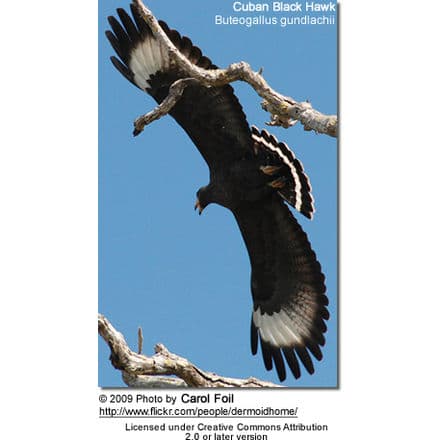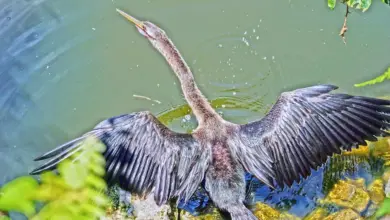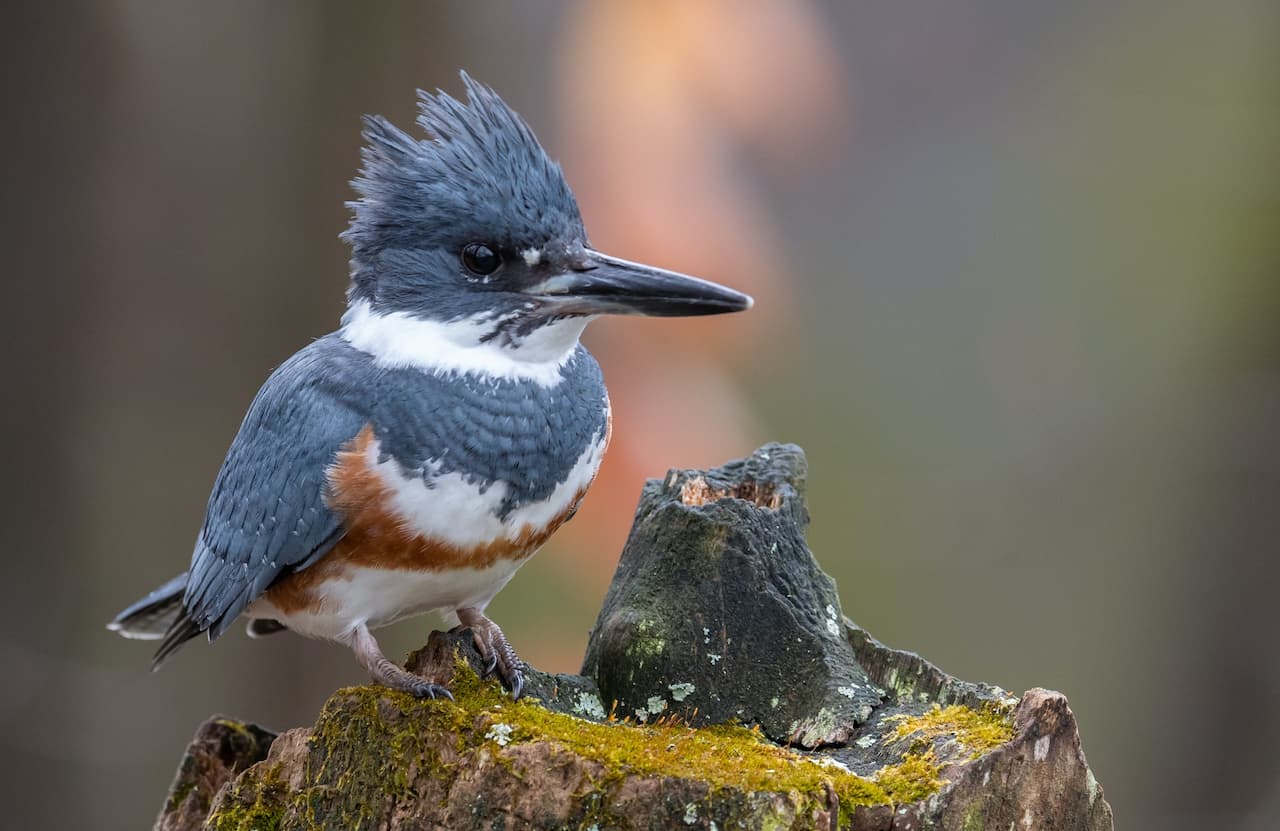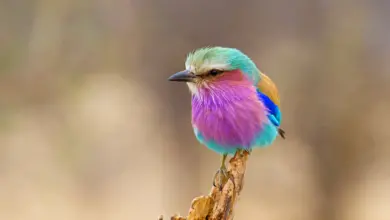Cuban Black Hawks
The Cuban Black Hawks (Buteogallus gundlachii) are large, dark hawks found on Cuba (south of Florida, USA) and some surrounding islands / cays.
.
Distribution / Habitat
These hawks occur naturally in Cuba, where they are common in the central-western parts; on the Isla de la Juventud (the “Isle of Youth”) , as well as on several of the larger cays. They are mostly restricted to coastal swamps and mangroves.
These hawks are quite common on the northern cays, such as the Romano, Paredon Grande, Coco, and in the Zapata Swamp. Elsewhere they are rare finds.
These raptors are in danger of becoming extinct. They are classified as Near Threatened. About 10,000 – 15,000 individuals are believed to still exist.
They are resident (non-migratory).

Subspecies:
The Cuban Black Hawk was traditionally considered a subspecies of the Common or Mangrove Black Hawk (Buteogallus anthracinus). However, in 2007, the American Ornithologists’ Union (AOU) formally acknowledged it as a separate species based on its smaller size, differing vocalizations and varying plumage details – including a more brownish cast of color, extensive white markings on the base of the primary flight feathers, and a whitish malar area.
Description
Cuban Black-Hawks are large, dark-plumaged hawks with yellow ceres (skin above the beak) and broad, white tail bands.
Plumage Details / Adults
The plumage is brown-blackish. The cere (unfeathered area above the beak) and the legs are yellow-orange. The tail is short with a distinctive white a broad white band in the middle and a narrow white tip. There is a white patch at the base of the primary wing feathers
Juvenile Description
Immature birds and rown above with buffy mottling. The plumage below is pale with brown streaks.
Similar Species
Cuban Black Hawks are distinctive within their range. They resemble the related Common Black-Hawk found on the mainland. However, Cuban Black Hawks are smaller in size, have a browner plumage and whitish malar stripes (stripe between the eye and the throat).

Diet / Feeding
Cuban Black Hawks feed on crabs, centipedes, lizards, rodents and – occasionally – small birds.
Breeding / Nesting
Most breeding occurs between January through June. Egg-laying usually takes place between late March and April. The oval eggs measure, on average, 42.71 – 55.87 mm and are greyish-white ( occasionally a greenish of bluish cast early on in the incubation), with dark or reddish-brown spots and blotches that most densely distributed at the large end of the egg.
The nests are large, cup-shaped structures constructed out of mangrove twigs and placed about 3.5 – 8 meters high in the subcanopy of mangrove trees. The nests are lined with green leaves and sprigs.
Calls / Vocalizations / Sounds
https://www.xeno-canto.org/embed.php?XC=72476&simple=1
Alternate (Global) Names
Danish: Cubasortvåge … Dutch: Cubaanse Zwarte Buizerd … French: Buse de Cuba, Buse noire de Cuba, Buse de Gundlach … Norwegian: Koksvåk … Polish: czarnostrzab / czarnostrz?b brunatny … Slovak: myšiak kubánsky … Spanish: Gavilán Batista
Birds of Prey … The Sport of Falconry







